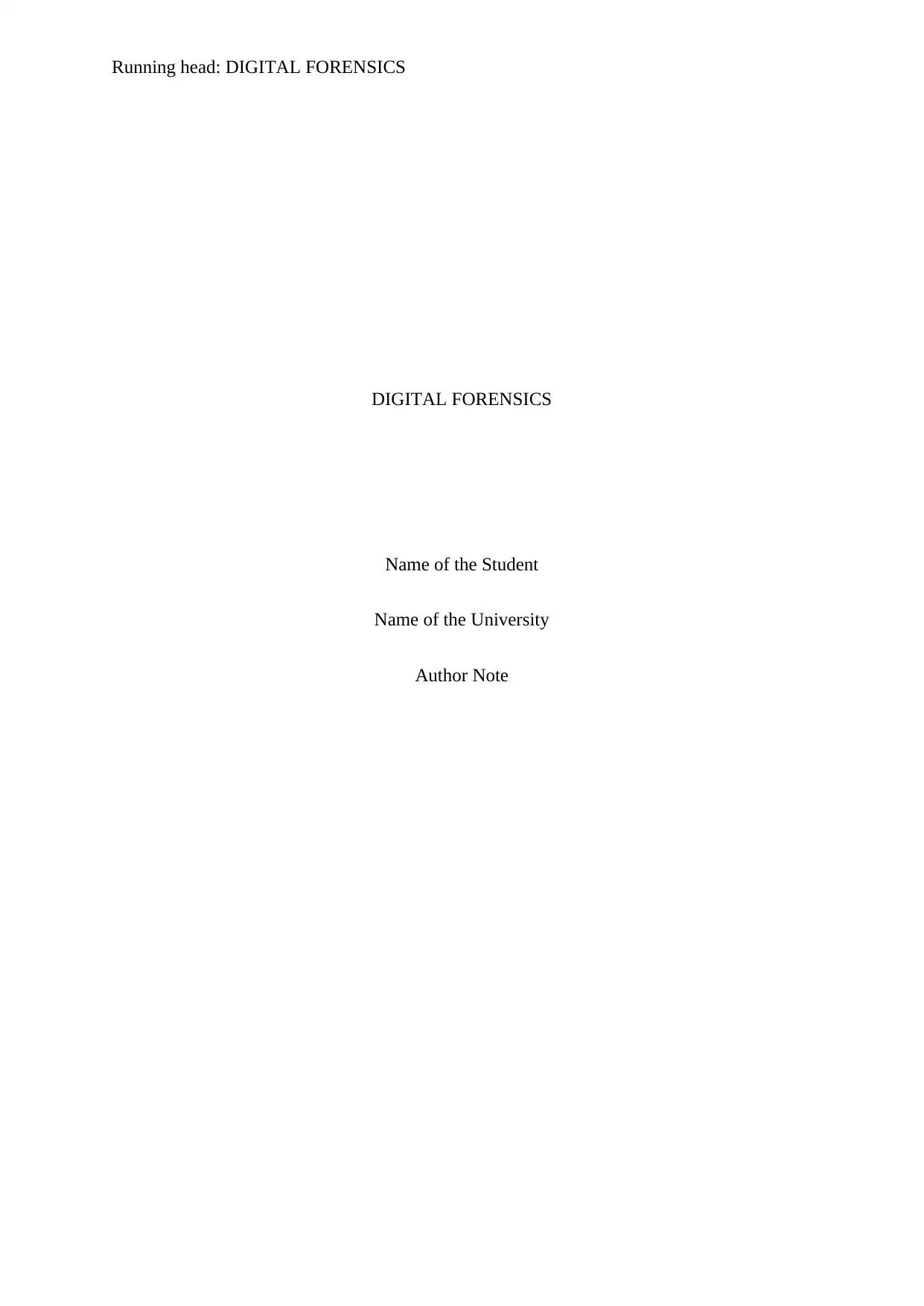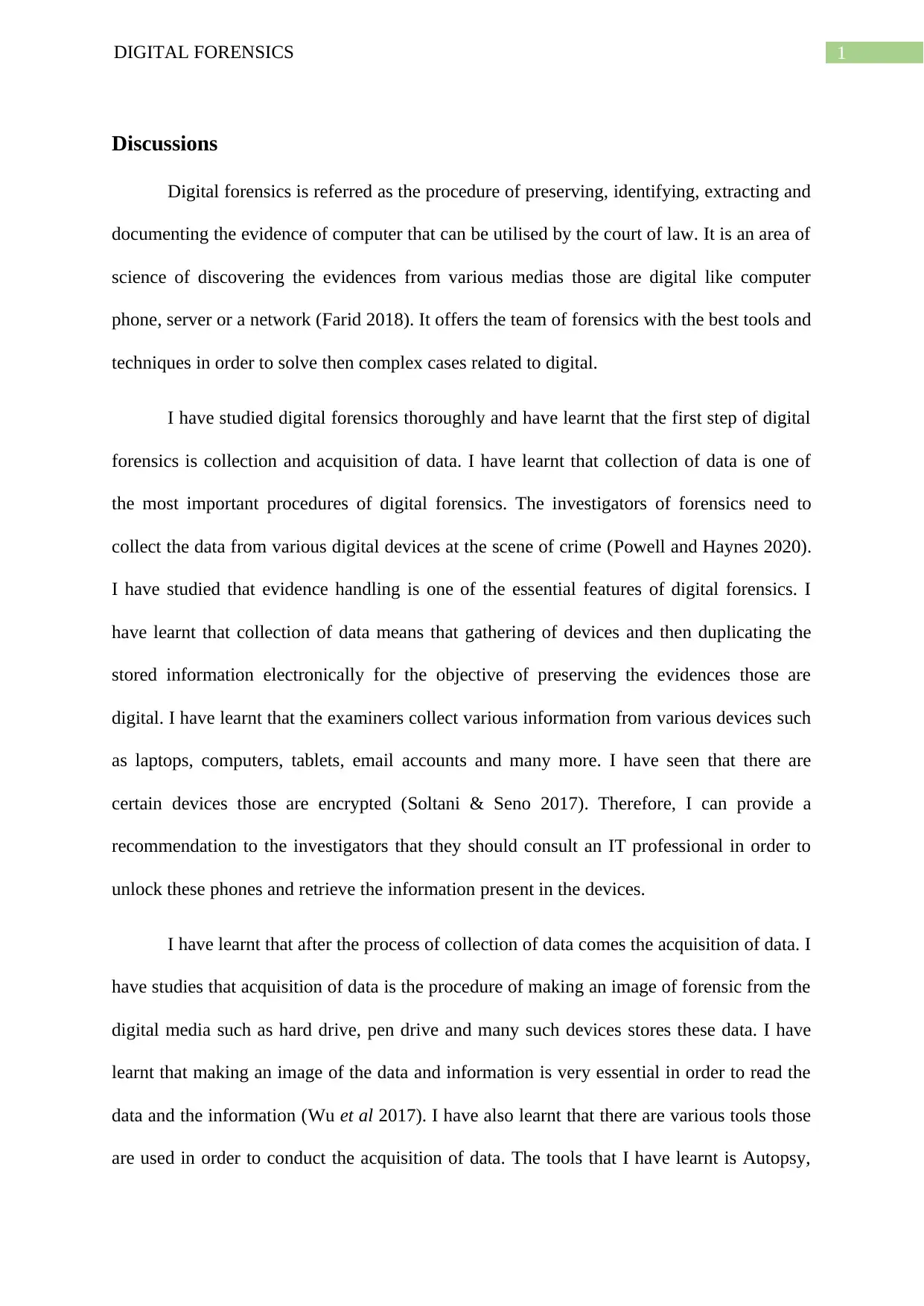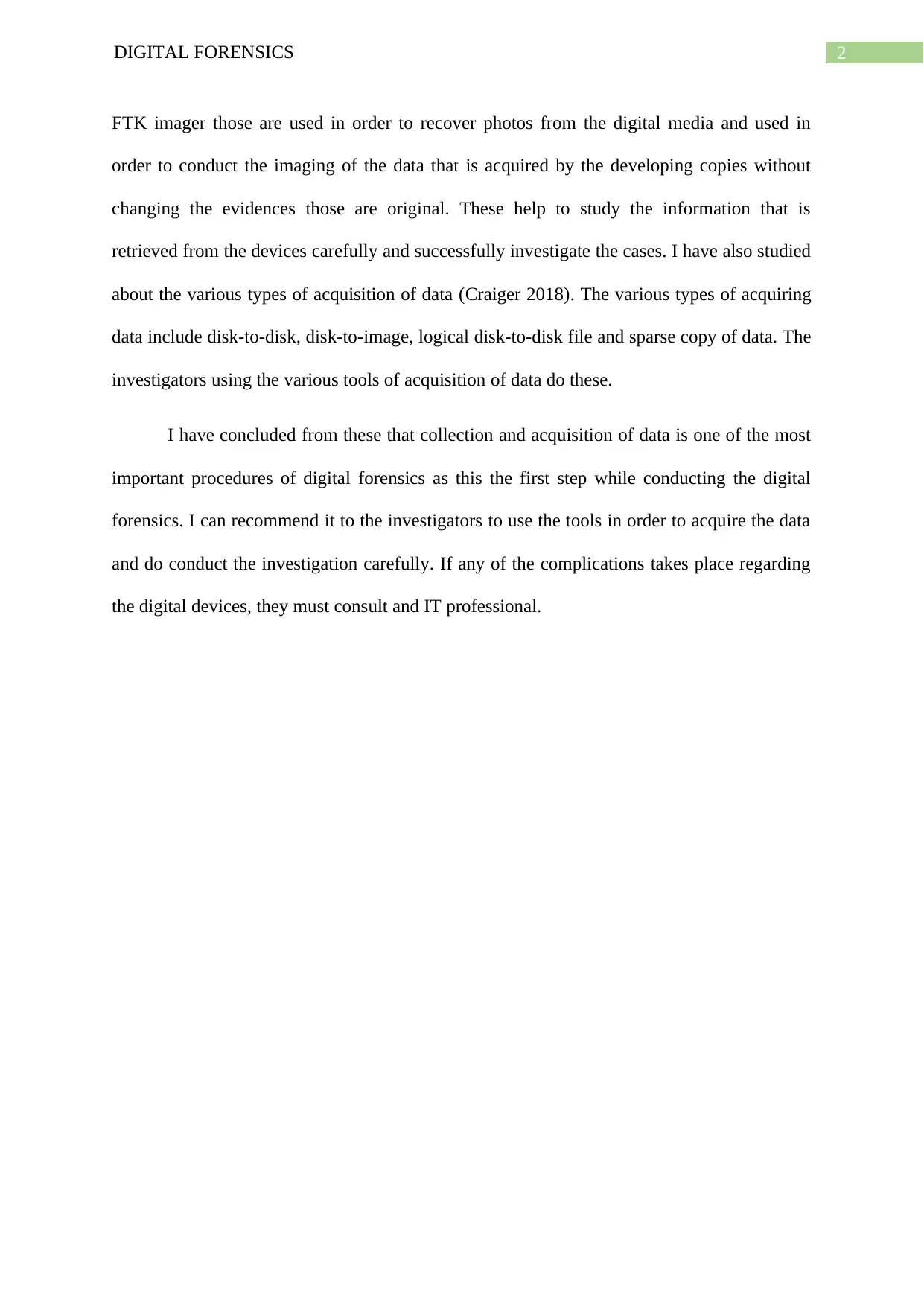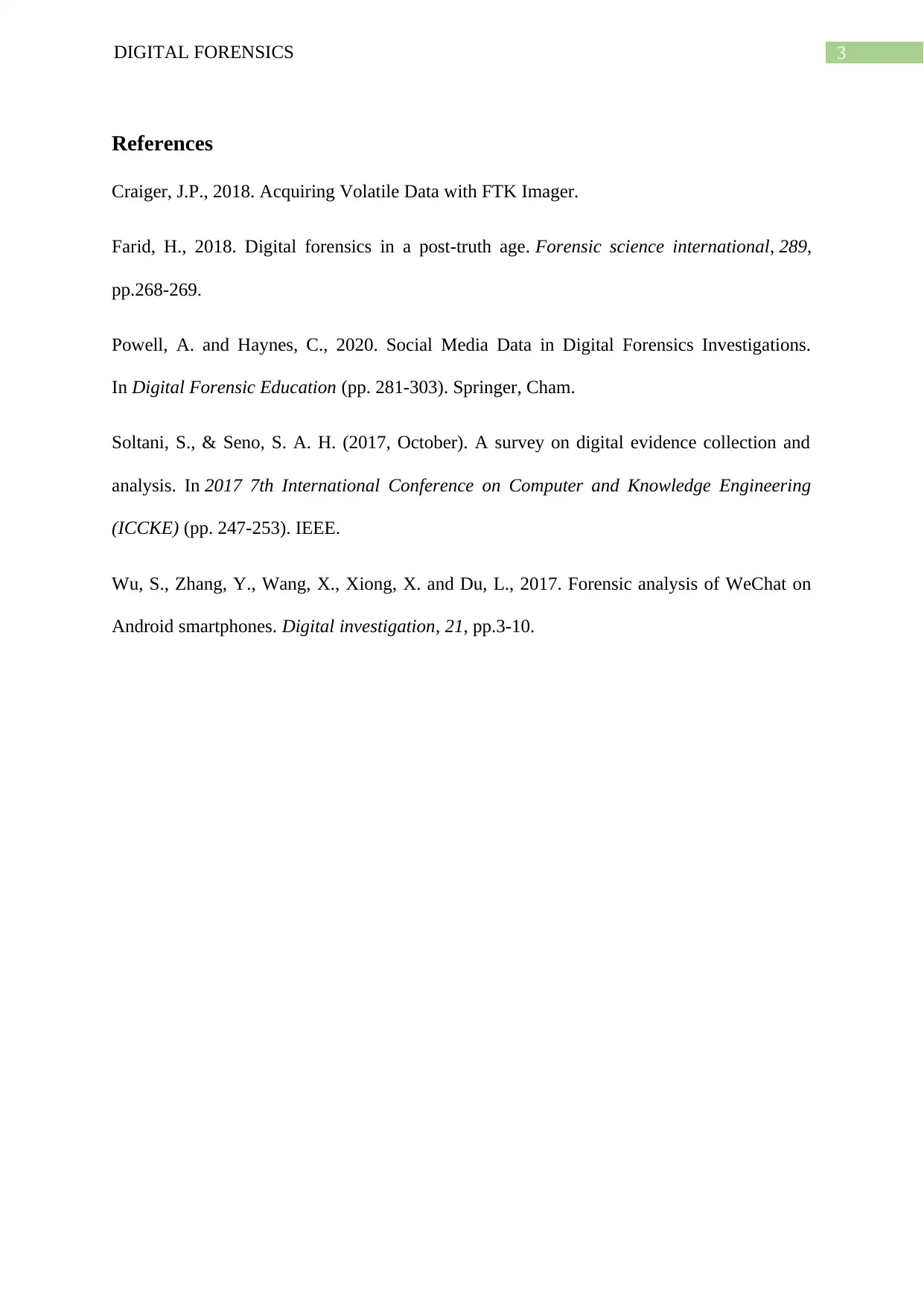Digital Forensics Assignment: Data Collection and Acquisition Analysis
VerifiedAdded on 2022/09/09
|4
|737
|20
Homework Assignment
AI Summary
This homework assignment delves into the critical procedures of digital forensics, specifically focusing on data collection and acquisition. The student explores the initial steps in a digital investigation, emphasizing the importance of preserving, identifying, extracting, and documenting digital evidence for legal proceedings. The assignment highlights the significance of data collection from various digital devices, including computers, phones, and servers, and the subsequent acquisition of data to create forensic images. The student discusses the use of forensic tools like Autopsy and FTK Imager, and different acquisition types. The student recommends consulting IT professionals for encrypted devices. The assignment emphasizes the importance of these procedures for successful digital forensics investigations.
1 out of 4











![[object Object]](/_next/static/media/star-bottom.7253800d.svg)